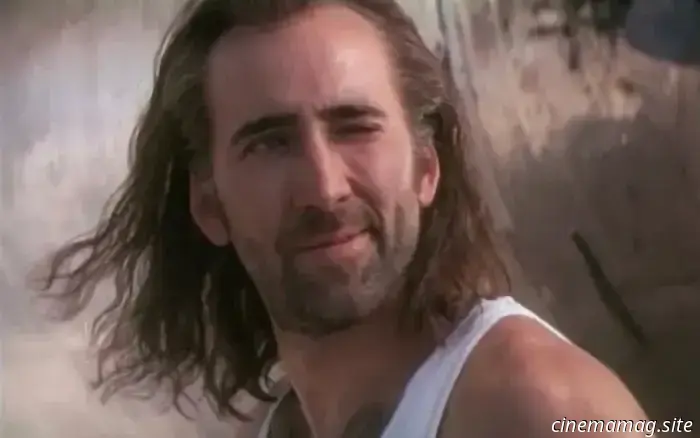
Three Days of the Condor at 50: The Origins of the Iconic Conspiracy Thriller
Hasitha Fernando examines the narrative behind Three Days of the Condor as it commemorates its 50th anniversary. Initially met with a somewhat muted reception upon its release, Three Days of the Condor has since been reevaluated and recognized as one of the finest conspiracy thrillers to come out of the 1970s, alongside titles like All the President’s Men, The Marathon Man, The Conversation, Klute, and The Parallax View. As this gripping spy drama marks its 50th anniversary, we reflect on its production and the behind-the-scenes conflicts that unfolded.
The film's screenplay remains celebrated as one of the best ever created. Six Days of the Condor, an espionage thriller by American author James Grady, was first published in 1974. The plot centers on a CIA agent known as Condor, who seeks to uncover the conspiracy that led to the brutal killings of his colleagues. Lorenzo Semple Jr., who authored the 1974 political thriller The Parallax View, and frequent collaborator David Rayfiel adapted the novel for film. The pair significantly reworked much of the original plot, relocating the narrative from Washington D.C. to the lively streets of New York City. The central plot device, originally involving a drug trafficking scheme, was altered to instead feature rogue CIA agents interested in Middle Eastern oil fields. The title was also shortened to Three Days of the Condor. Semple Jr. and Rayfiel's engaging script won the Edgar Award for Best Motion Picture Screenplay the following year and is still utilized in university film courses across the U.S. as a model for effective screenwriting.
Warren Beatty was initially considered for the role that ultimately went to Robert Redford. Throughout his illustrious six-decade career, the late Robert Redford became a legendary Hollywood figure, proving his talent both in front of and behind the camera as an actor, director, and producer. The incredibly gifted actor rose to prominence in the 1970s with memorable performances in films such as Butch Cassidy and the Sundance Kid, All the President’s Men, The Sting, Jeremiah Johnson, and The Way We Were. As a noted filmmaker and producer, Redford earned an Academy Award nomination for Best Director with his directorial debut, Ordinary People, which won the Oscar for Best Film that year. Before Redford joined the project, Warren Beatty had been linked to the lead role with Bullitt’s Peter Yates attached as director. However, after Redford came on board, he preferred Sydney Pollack to direct, having previously collaborated with him on Jeremiah Johnson and The Way We Were. Consequently, producer Dino De Laurentiis fully paid Yates' $200,000 salary to bring Pollack into the project.
Robert Redford played a significant role in various aspects of production. Although the story of Three Days of the Condor is set in winter, filming took place during autumn. To create the desired wintry atmosphere, the trees and saplings in the film's locations needed to be defoliated. Redford, an avid environmentalist, personally oversaw this process to ensure no harm came to the local flora. Additionally, he intervened to alter the advertising strategy devised by the studio, which wanted to emphasize the CIA aspect of the film. With Pollack's backing, Redford successfully persuaded them to shift the focus towards the characters for promotional purposes.
Director Sydney Pollack’s hands-on method surprised Faye Dunaway. Faye Dunaway, one of the finest actresses of her generation, has earned multiple awards, including an Academy Award, a Primetime Emmy Award, a BAFTA, and three Golden Globe Awards. She gained fame for her captivating performance as outlaw Bonnie Parker in Bonnie and Clyde. In her autobiography “Looking for Gatsby,” Dunaway recounted Pollack’s active engagement in directing the actors, sharing a specific instance where Redford left the set and Pollack temporarily took over his role for her reaction shots: “The cameras were rolling, I was in position, and suddenly Sydney lunged at me, growling ‘I am going to get you!’. I’m tied up at this point, unable to get away or move much at all, but Sydney kept moving toward me, his eyes glaring at me as he went on detailing all the horrible things he was going to do to me, and let me tell you, Sydney has an inventive mind. He is also a great actor, and he scared the hell out of me. Sydney kept the camera rolling and he was relentless.”
Sydney Pollack took legal action against Danish TV for “mutilating” his film. Pollack was displeased when Danish television aired a pan-and-scan version of Three Days of the Condor in 1991. He went so far as to sue the network for “mutilation” of the film and for violating his “droit moral,” which protects an artist's right to maintain their integrity and reputation. Ultimately










Other articles
 Jimmi Simpson is set to join the third season of The Walking Dead: Dead City.
The third season of AMC's spin-off The Walking Dead: Dead City has included Jimmi Simpson (Westworld) in its cast as a regular. The Walking Dead: Dead City features Lauren Cohen…
Jimmi Simpson is set to join the third season of The Walking Dead: Dead City.
The third season of AMC's spin-off The Walking Dead: Dead City has included Jimmi Simpson (Westworld) in its cast as a regular. The Walking Dead: Dead City features Lauren Cohen…
 Star Trek: Voyager – Across the Unknown reveals its initial gameplay trailer.
Daedalic Entertainment has released the inaugural gameplay trailer for their forthcoming narrative-focused survival strategy game, Star Trek: Voyager – Across the Unknown. In this new Trek title, players...
Star Trek: Voyager – Across the Unknown reveals its initial gameplay trailer.
Daedalic Entertainment has released the inaugural gameplay trailer for their forthcoming narrative-focused survival strategy game, Star Trek: Voyager – Across the Unknown. In this new Trek title, players...
 Nicolas Cage is set to collaborate once again with the director of Con Air for the World War II film Fortitude, which will also feature Matthew Goode, Alice Eve, and others.
Nicolas Cage is set to collaborate again with his Con Air director Simon West for Fortitude, a World War II drama inspired by a true story that revolves around two British spies and a double agent who employed deception...
Nicolas Cage is set to collaborate once again with the director of Con Air for the World War II film Fortitude, which will also feature Matthew Goode, Alice Eve, and others.
Nicolas Cage is set to collaborate again with his Con Air director Simon West for Fortitude, a World War II drama inspired by a true story that revolves around two British spies and a double agent who employed deception...
 Now You See Me: Now You Don’t unveils a series of character posters.
After last week's trailer for Now You See Me: Now You Don't, Lionsgate has unveiled a series of new character posters for the third installment of the magician heist series featuring...
Now You See Me: Now You Don’t unveils a series of character posters.
After last week's trailer for Now You See Me: Now You Don't, Lionsgate has unveiled a series of new character posters for the third installment of the magician heist series featuring...
Three Days of the Condor at 50: The Origins of the Iconic Conspiracy Thriller
Hasitha Fernando examines the background of Three Days of the Condor as it marks its 50th anniversary. Despite its rather understated reception upon release, Three Days…
